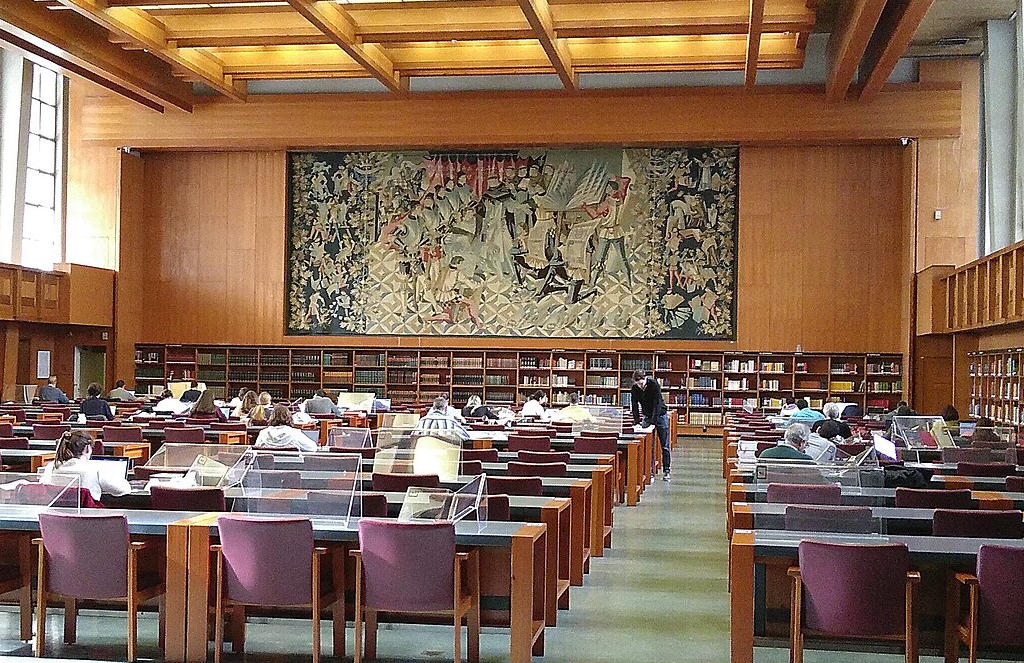Over the course of more than 130 years in Lisbon's Chiado district, the National Library of Lisbon went through periods of modernization and enrichment, as well as moments of stagnation. Notably, in the 19th century, efforts were made to absorb collections from abolished religious establishments. The library organized bibliographic exhibitions and published catalogs, showcasing various collections and fostering a deeper understanding and appreciation of Portugal's rich cultural heritage.
The proclamation of the Republic in 1910 marked another significant turning point for the library. A new wave of library incorporations followed the abolition of religious institutions, adding to the already vast collections. From 1920 to 1926, the library experienced a phase of remarkable progress in the field of library and information science, facilitated by the so-called "Library Group." This period saw a flourishing cultural life, characterized by vibrant activities and events that contributed to the library's reputation as a center of intellectual exchange.
As the library's collections continued to grow, it became evident that a purpose-built building was necessary to provide adequate storage and preservation conditions for its rich holdings. In 1958, construction work began on a new building in the Campo Grande area, designed by architect Porfírio Pardal Monteiro. In 1969, the library was relocated to its new premises, which offered a fitting home for the largest collection of Portuguese bibliographic materials.
Embracing technological advancements, the library embarked on a process of computerization in the 1980s. It played a significant role in supporting the computerization of libraries across Portugal, leading to the creation of the National Bibliographic Database, known as PORBASE. Simultaneously, the library continued to enrich its collections, establishing an Archive of Writers' Personal Papers and undertaking major initiatives in areas such as standardization of library and information techniques, preservation and conservation, and cultural activities.
In the 21st century, the library has adapted to the international trend of digitizing bibliographic collections. The creation of the Biblioteca Nacional Digital (National Digital Library, BND) has allowed for the digitization and online accessibility of numerous works, fostering collaborations with other European institutions.
Lisbon.vip Recommends
Furthermore, the BNP serves as the National Bibliographic Agency, responsible for legal deposit, recording and dissemination of the Portuguese National Bibliography, and coordination and management of PORBASE. The BNP actively promotes the professional development of libraries in Portugal and sets national standards for documentation and information.
Protecting and enhancing the country's bibliographic heritage remain fundamental aspects of the BNP's mission. As the guardian of Portugal's largest collection of bibliographic treasures, the BNP is committed to preserving and showcasing these cultural artifacts. Through inter-institutional cooperation, exhibitions, research activities, and publications, the BNP diligently studies and promotes its holdings, both within Portugal and internationally.
The Royal Public Library of the Court, now known as the National Library of Portugal, stands as a testament to Lisbon's commitment to preserving and enriching its bibliographic heritage. With its extensive collections, modern facilities, and dedication to technological advancements, the library continues to play a vital role in promoting knowledge, fostering cultural appreciation, and serving as a beacon of intellectual curiosity for generations to come.





